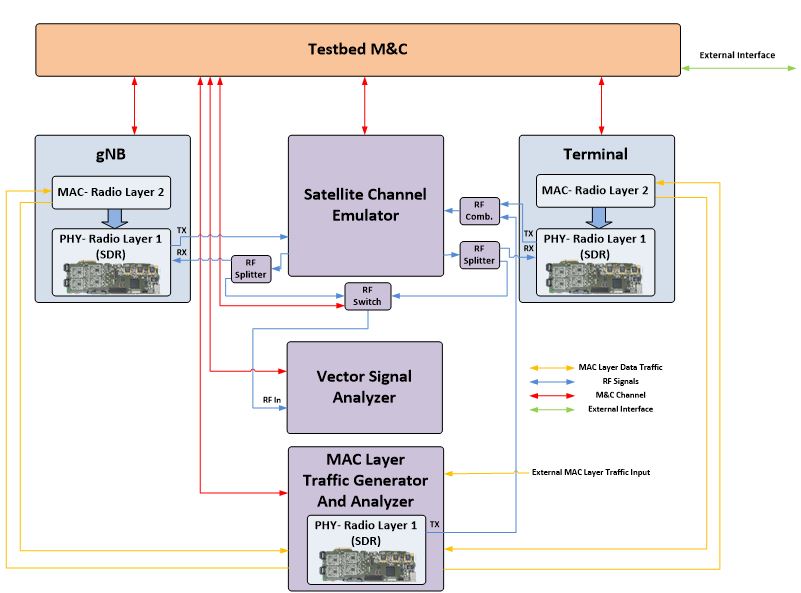5G4Space
Adaptation of 5G radio access technology for Satcom
| Business | Start date | Prime Contractor | Client |
|---|---|---|---|
| Industry | May 2019 |
RINA Consulting | European Space Agency |
Challenge

For the first time since the development of the terrestrial cellular systems, the Satcom community aims at identifying scenarios and technology adaptations allowing the inclusion of a Non-Terrestrial Network (NTN) component into the 5G ecosystem. This study contributes to the standardization of the NTN component in release 17.
This study contributes in:
- assessing the impact of the non-terrestrial environment on the technologies already developed for the terrestrial component;
- spin-in terrestrial technologies in order to make them operate in the non-terrestrial component
- developing a suitable platform for the spin-in assessment and for future standardization.
The focus is on the adaptation of terrestrial technologies developed and studied within 3GPP for 5G systems to satellite scenarios and their implementation on HW and SW platforms.
Approach
As project coordinator, RINA is commissioned to manage the full project cycle and is in charge of the project management (including quality and risk management). We are providing system engineering services, performing testing and roadmapping activities, and conducting LCA studies.
The verification platform emulates the expected satellite scenarios, allowing the operator configuring the typical parameters of the chosen satellite channel and evaluate the performances by analysing the data received at MAC (Medium Access Control Layer) level.
Thanks to the adaptation and reuse of the 3GPP (Release 13 and beyond) terrestrial radio access technologies in satellite systems, a significant simplification in the implementation of the emerging satellite networks and the integration of satellite and terrestrial networks can be obtained. This activity strongly increases the trust in the newly developed 5G technologies and fosters their rapid adoption, by contributing also to standardization fora.
Conclusion
The project results include:
- thorough investigation of the constraints that satellite links impose on the PHY and MAC layers. Potential areas of impact are identified in order to select a set of 3GPP technologies to focus on for further testing and for adaptation on the identified satellite scenarios and corresponding channel models.
- PHY/MAC Verification Methodology Definition and Verification Platform, with clear specification of the protocols used, the functionality provided and of the HW/SW selection implementation strategy.
- The platform is able to interface with external units in order to potentially validate end-to-end performance. A documented reference PHY performance of the selected 3GPP technologies under ideal conditions (i.e. AWGN - Additive White Gaussian Noise) is implemented.
- Test campaign on the platform in order to assess the compliance with the requirements and for the optimization of the features under test. A documented specification of the proposed air-interface is also foreseen.
Subcontractors
1. CNIT 2. Nitel 3. Airbus Italia S.p.A